"The future belongs to those who believe in the beauty of their dreams." Jensen Huang, this legendary figure in the semiconductor industry, with his persistent pursuit and forward-looking insight into the Graphics Processor Unit (GPU), single-handedly built the NVIDIA empire and is now leading the world into a new era of artificial intelligence (AI). This article will tell the story of Jensen Huang's entrepreneurial journey, the rise of NVIDIA, and deeply explore his innovative contributions and far-reaching influences in the fields of GPU and AI.

I. Silicon Valley Legend: From Gaming Graphics Card to Computing Platform
1. Pioneer of Gaming Graphics Card: Igniting the Flame of Dream
In 1993, Jensen Huang and two partners jointly founded NVIDIA, with the original intention of creating a gaming graphics card that could bring the ultimate visual experience to players. Although the first product NV1 encountered setbacks in the market, Jensen Huang was not discouraged. Instead, he strengthened his belief in GPU technology.
Storytelling: Facing the failure of NV1, Jensen Huang once firmly said to the team, "We either become the leader of the GPU or disappear." This sentence shows his determination and courage in adversity and also foreshadows the future brilliance of NVIDIA.
Turning Point: In 1999, NVIDIA launched GeForce 256, which first defined the concept of "GPU", marking the beginning of the modern graphics processor era. This product not only revolutionized the game graphics but also laid the groundwork for Jensen Huang's computing platform dream due to its powerful parallel computing ability.
In-depth Interpretation: Jensen Huang started from the gaming graphics card but transcended the boundary of entertainment and perceived the huge potential value of the GPU in the field of parallel computing. This strategic vision laid a solid foundation for the subsequent rise of NVIDIA.
2. Transformation to Computing Platform: Creating a New Era
Jensen Huang realized that the GPU is not only for gaming but can be used as a general-purpose computing engine to handle a large number of parallel data tasks. He boldly proposed to transform NVIDIA into a "computing platform provider", leading a revolution in the computing architecture.
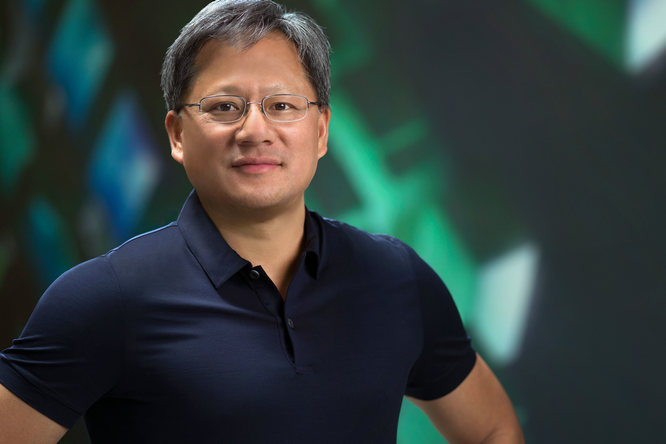
Data Support: Since 2001, NVIDIA's share in the high-performance computing (HPC) market has been increasing year by year, and by 2022, it has exceeded 70%. Its GPUs are widely used in fields such as scientific research, medical imaging, and financial modeling, becoming the computing main force of global research institutions and enterprises.
Quote Citation: "The GPU is not born for gaming; gaming is just a market discovered by the GPU." This famous quote of Jensen Huang reveals his profound understanding of the essence of the GPU and his accurate grasp of the market trend.
Case Analysis: In 2008, researchers at Stanford University used NVIDIA GPUs to accelerate protein folding simulation, with a speed increase of nearly 100 times. This is a major breakthrough in the application of the GPU in non-gaming fields. Since then, the GPU has shone brightly in complex scientific computations such as genomics and climate simulation, verifying the correctness of Jensen Huang's computing platform strategy.
In-depth Discussion: Jensen Huang's transformation of the computing platform broke the traditional computing model dominated by the CPU and created a new era of heterogeneous computing. This revolution not only reshaped the semiconductor industry landscape but also provided powerful hardware support for emerging technologies such as big data and AI.
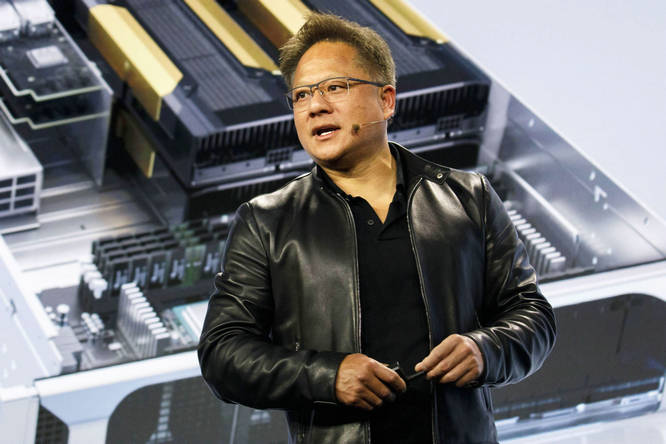
II. AI Leader: Driving the Intelligent Revolution
1. Foreseeing the Future of AI: From GPU to AI Engine
Back when the GPU was widely recognized as the key to gaming performance, Jensen Huang had already insight into its huge potential in parallel computing, especially its supporting role for the upcoming AI wave. He asserted, "The GPU is not born for gaming; gaming is just a market discovered by the GPU."
Turning point: In 2006, NVIDIA launched the CUDA programming platform, giving developers the ability to directly utilize the GPU for parallel computing, paving the way for the large-scale application of AI algorithms. In the same year, the first Tesla GPU for scientific computing was born, indicating that NVIDIA officially entered the field of high-performance computing.
In-depth interpretation: Jensen Huang's profound understanding of the essence of the GPU and his accurate prediction of the development trend of AI enabled NVIDIA to complete the key strategic layout on the eve of the AI revolution. The launch of CUDA and Tesla not only provided a powerful hardware foundation for AI research but also opened a new chapter for the GPU as a general-purpose computing platform.
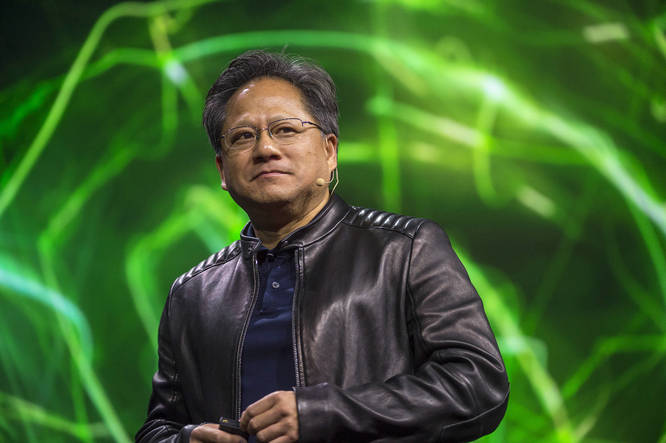
1. AI Empowering All Industries: Examples Witnessing the Impact
With the rapid development of AI technology, NVIDIA under the leadership of Jensen Huang has become the core force in global AI research and application. Its GPU products and solutions have been deeply embedded in various industries, driving the wave of the intelligent revolution.
Data support: According to the latest statistics, more than 90% of the world's top AI research is based on NVIDIA GPUs. In addition, NVIDIA has more than 80% market share in the data center GPU market, becoming the main provider of global AI computing power.
Case analysis:
2. Medical field: The NVIDIA Clara platform helps medical institutions achieve rapid diagnosis and precise treatment of medical images. For example, the Mayo Clinic uses NVIDIA GPUs to accelerate genome sequencing, shortening the originally time-consuming work to a few hours and significantly improving the level of personalized medicine.
3. Autonomous driving: The NVIDIA Drive AGX platform provides a complete autonomous driving solution for automakers. For example, the Tesla Model S is equipped with the NVIDIA Tegra processor to achieve L2-level autonomous driving functions, opening a new era of intelligent driving.
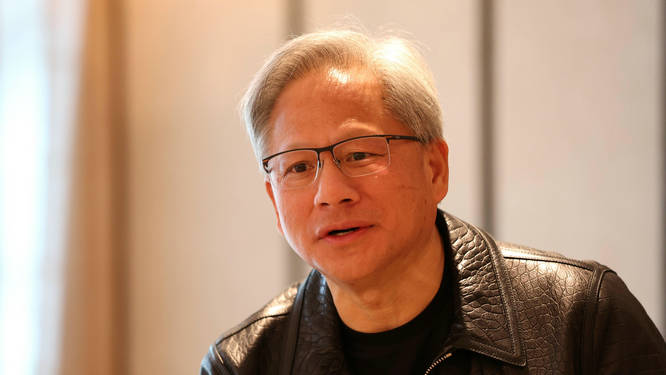
In-depth discussion: Jensen Huang-led NVIDIA, by providing powerful AI computing power and solutions, successfully promoted AI from the laboratory to reality, empowering all industries to achieve intelligent transformation, strongly proving its role and value as an AI leader.
1. Building an AI Ecosystem: Long-Term Layout and Continuous Innovation
Jensen Huang knows well that driving the intelligent revolution requires not only strong hardware support but also building an open and collaborative AI ecosystem. To this end, NVIDIA actively invests in research and development, continuously launches innovative products, and deeply cooperates with global developers, research institutions, and enterprises.
Strategic measures:
1. Platforms and tools: In addition to CUDA, NVIDIA has also launched tools such as TensorRT and NGC container registry to simplify the development, optimization, and deployment process of AI models and reduce the technical threshold of AI.
2. Education and cooperation: The NVIDIA Deep Learning Institute provides training courses for global developers to cultivate AI talents. At the same time, it has established strategic cooperative relationships with tech giants such as IBM, Microsoft, and Google to jointly promote the research and application of AI technology.
Jensen Huang's vision: "Our goal is to make AI accessible to everyone and empower everyone." Jensen Huang's this vision demonstrates his determination to popularize AI technology and build an inclusive AI ecosystem.
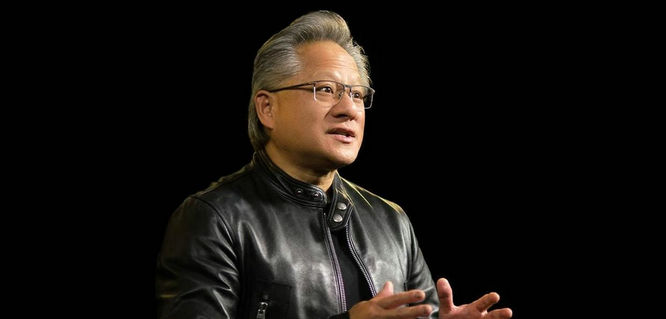
In-depth interpretation: Jensen Huang's long-term layout and continuous innovation aims to break the technical barriers of AI, promote its wide application and deep integration, and lay a solid foundation for building an AI-empowered intelligent society.
III. Industry Changer: From Edge Computing to Metaverse
[1: The Innovator of Edge Computing]
Huang Renxun once said, "The future of computing lies at the edge." This statement is like a prophecy, accurately predicting the profound transformation of today's world from a centralized to a distributed computing model. As early as 2017, he acutely sensed the challenges brought by the explosive growth of data and the need for real-time processing, and put forward the concept of "everything can be accelerated", leading NVIDIA to layout the field of edge computing. By developing cutting-edge products such as the Jetson series of edge AI platforms, NVIDIA has successfully pushed powerful GPU computing power to the network edge, enabling many application scenarios such as driverless, intelligent manufacturing, and smart cities.
[Case Analysis]
Taking autonomous driving as an example, industry leaders such as Waymo and Tesla have all adopted NVIDIA's edge computing solutions to process the massive amount of data generated by vehicle sensors in real time, achieving accurate path planning and environmental perception, and promoting autonomous driving technology to enter a new stage of commercialization. According to statistics, more than 350 companies worldwide have used NVIDIA's edge computing products in their autonomous driving projects, with a market share of up to 80%, which fully demonstrates its leading position in this field.
[2: The Visionary of the Metaverse]
However, Huang Renxun's vision has not stopped at the innovation of edge computing in the real world. Facing the new blue ocean of the digital world - the metaverse, he once again showed advanced insight: "The metaverse will become a part of our lives, just as indispensable as the Internet today." Under Huang Renxun's planning, NVIDIA launched the Omniverse platform, aiming to build a virtual world based on physical laws and interoperable, creating an entrance to the metaverse for designers, engineers, and even ordinary users.
[Case Analysis]
For example, the BMW Group has used the Omniverse platform to achieve real-time collaboration of global design teams, transcending geographical limitations and greatly shortening the new car development cycle. In addition, Huang Renxun also personally demonstrated a virtual scene named "Kitchen" at the 2021 GTC conference, showing the powerful ability of Omniverse in simulating real physical effects and realizing human-computer interaction, making people full of expectations for the future metaverse life.
[In-depth Analysis]
Huang Renxun's success is not accidental, behind which is the persistent pursuit of technological innovation and the accurate grasp of industry trends. He firmly believes that "technology is not the goal, but a means to solve problems." Whether it is the rise of edge computing or the conception of the metaverse, Huang Renxun has always focused on how to use technological power to solve practical problems and improve the quality of human life. This people-oriented and problem-solving-oriented innovation spirit is the core driving force that drives him to continuously lead industrial changes.
Conclusion:
Huang Renxun, with his tenacious entrepreneurial spirit, accurate strategic vision, and deep understanding of technological trends, has built NVIDIA from a start-up company into a global technology giant. The concept of GPU general computing he advocated and his full investment in AI are profoundly changing our lives, work, and even the entire social structure. Just as Huang Renxun said: "We are in a great era of innovation, and everything is possible." In this future full of infinite possibilities, Huang Renxun and NVIDIA will continue to serve as role models of explorers and innovators, writing more technological legends.
